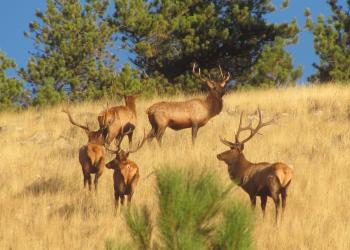Welcome to Bighorn National Forest
Located in north-central Wyoming, the Bighorn Mountains are a sister range of the Rocky Mountains. Conveniently located halfway between Mt. Rushmore and Yellowstone National Park, the Bighorns are a great vacation destination in themselves. Visitors experience a diverse landscape - from grasslands to alpine meadows, clear lakes to glacial carved valleys and rolling hills to sheer mountain cliffs.
We've got a new look!
In April 2025, we transitioned to a new web platform to better serve the public. With thousands of pages to update, some content may take additional time to appear. Some older content has been archived during this move as well.
We appreciate your patience as we work to make it easier than ever to access information and explore your national forests - both online and on the ground.
If you cannot find what you are looking for, please contact your local Forest Service office or submit your question using the form on our Contact Us page.
Bighorn Mountains Photo Gallery
Recreation Management

Curious about recreation management? Have questions about camping regulations? Visit this page for the information you need.
Motor Vehicle Use Map

Look here to explore the official map for motorized travel in the Bighorn National Forest.
Informational Handouts (Includes Nordic Ski Maps)

Looking for more details on where to hike or other activities? Check these handouts for more information.
















